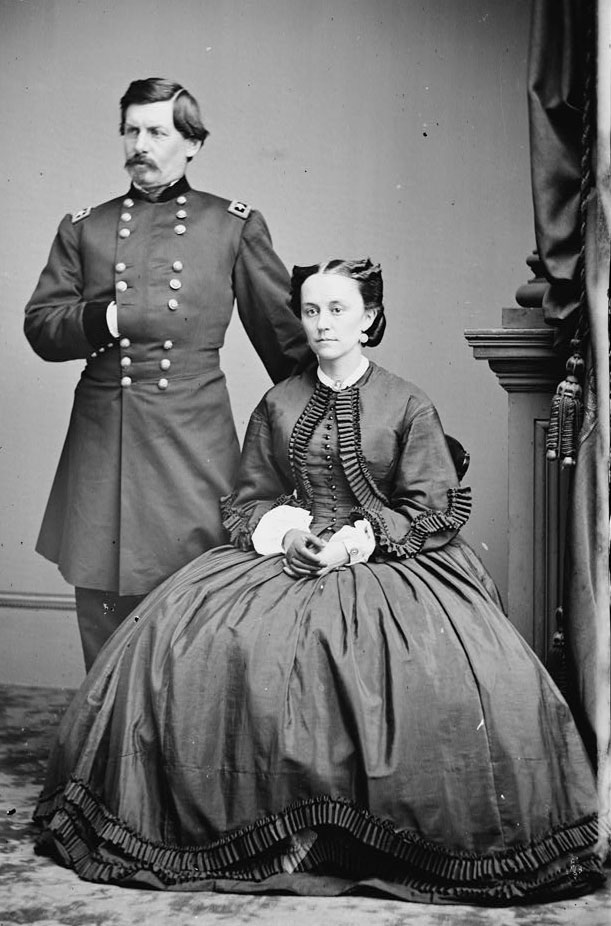Matthew’s Hill
With the Confederates pushed back over the Warrenton Turnpike, and Heintzelman’s Third Division chasing them and two brigades of Tyler’s First Division joining them, it seemed unlikely that Hampton’s Legion could hold out long. McDowell had stationed himself on Matthew’s Hill, watching and directing the action with his chief of staff, James Fry. In short order, they were met by Colonel Cump Sherman from the First Division, asking where his brigade might be of most use (McDowell sent him against Hampton’s Legion), and Colonel Ambrose Burnside asking to pull his men out of the battle to rearm and rest, since (he smugly noted) they had done the bulk of the fighting in the victory (Fry said: “McDowell, in the excitement of the occasion, gave reluctant assent…”).
Burnside’s men backed away from the confusion, replaced by some of Porter’s brigade and some of Sherman’s brigade, and walked up Matthew’s Hill to behind the artillery pounding away at Henry Hill where they waited for more ammunition to be brought to them. Fiske, now in command of the 2nd New Hampshire with his colonel wounded, wrote:
A cheer came from away off to the right, and was taken up by us and rolled along to the extreme left. McDowell rode down our front announcing that we had won a glorious victory. One of our men near me said, pointing to some columns of dust over the trees to the south of us and moving toward us, “It seems to me, Colonel, that if we have whipped them, that dust ought to be moving the other way…”
McDowell ordered Heintzelman to aggressively position his Third Division along the Sudley Road south of the Warrenton Turnpike, which would be full of men from Porter’s brigade and Tyler’s division to form a massive L that would push the Confederate army in on itself until it collapsed.
Henry Hill
Johnston and Beauregard arrived to a scene of chaos on Henry Hill. The brigades of Bee, Bartow, and Evans were no more than an armed mob, their commanding officers abandoning all pretenses to structure and gathering knots of men to lead on charges. Hampton’s legion was now surrounded on three sides and as they watched began to crumble. At some point over the next hour Bartow would be dead, but the situation was too chaotic to identify when.
It was a desperate situation and a dramatic legend was born of it. As with all legends, there are multiple versions and few verifiable facts. At some point in the mayhem, Barnard Bee compared the unmoving line of Colonel Thomas Jackson to a stone wall. In some accounts, when all seems lost he cries out “Look boys, there stands Jackson like a stone wall. Rally around the Virginians!” In others, he is cursing the general who rather than come to the aid of his men is “standing there like a bloody stone wall.” And it’s also possible that Bee never said anything at all about stone walls. In the following hour he would be shot through the abdomen and over 24 hours slowly and painfully bleed to death in a Confederate hospital before the story would begin to be told.
But what Beauregard and Johnston saw was enough to make the legend credible. The colonel in the dingy blue VMI uniform had his men standing stock still while the wave of Northerners rushed towards them, holding their fire until they couldn’t miss and stunning the advancing army. Beauregard quickly had the remainder of Hampton’s Legion fall in beside Jackson’s brigade and then he and Johnston rode their horses around fleeing men, pushing them back into a battle line on the far end of Henry Hill.
Key People and Sources







